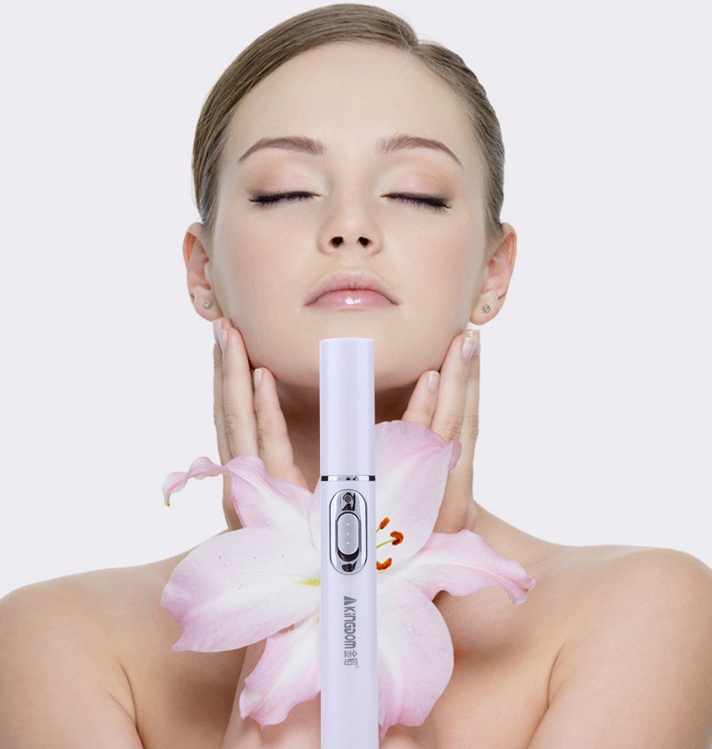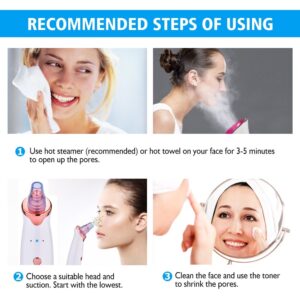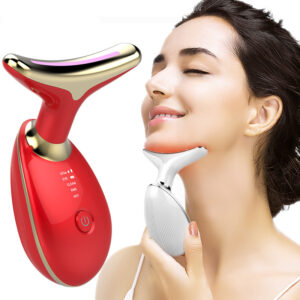Facial Cleansing Brushes: Do They Really Work?

Think of it: a spinning or vibrating brush gently exfoliating your skin, supposedly removing dirt, oil, and makeup more effectively than your hands ever could. Sounds pretty appealing, right? The beauty industry is constantly evolving, with new products and gadgets popping up all the time, especially within the Beauty&Health sector. These brushes are no exception, and their popularity has soared.
The Potential Benefits: What’s the Appeal?
- Deeper Clean: They can potentially remove more dirt and oil.
- Exfoliation: Helps slough off dead skin cells, revealing brighter skin.
- Improved Circulation: The massaging action can boost blood flow.
- Better Absorption: Prepares the skin for serums and moisturizers.
Types of Facial Cleansing Brushes
From sonic vibrations to rotating bristles, there’s a cleansing brush for (almost) everyone. Let’s take a quick look at some common types:
- Sonic Brushes: These vibrate at high speeds, gently shaking away impurities.
- Rotating Brushes: These spin to exfoliate the skin.
- Silicone Brushes: Often more hygienic and gentler than bristle brushes.
Examining the Claims: Effectiveness on Different Skin Types
Okay, so cleansing brushes sound pretty good so far. But here’s the real question: do they work for *everyone*? The answer, as with most skincare products, is a resounding… it depends! Your skin type plays a huge role in how your skin will react to a facial cleansing brush.
Oily Skin: A Match Made in Heaven?
If you’ve got oily skin, a cleansing brush *can* be a game-changer. The deep cleansing action can help remove excess oil and prevent clogged pores. However, moderation is key. Overdoing it can strip your skin of its natural oils, leading to even *more* oil production. Aim for using it 2-3 times a week and always use a gentle cleanser.
Dry Skin: Tread Carefully
Dry skin needs gentle care. Using a cleansing brush too often or with too much pressure can exacerbate dryness and lead to irritation. If you have dry skin, opt for a brush with soft, gentle bristles and use it sparingly, maybe once or twice a week. Always follow up with a rich moisturizer.
Sensitive Skin: Proceed with Caution!
Sensitive skin is the trickiest. Many people with sensitive skin find cleansing brushes too harsh. Redness, irritation, and even breakouts are possible. If you have sensitive skin and want to try a cleansing brush, look for one specifically designed for sensitive skin with ultra-soft bristles or a silicone head. Start with the lowest speed setting and use it *very* infrequently, like once every other week. Pay close attention to how your skin reacts and discontinue use if you experience any irritation.
Ultimately, understanding your skin type is crucial before incorporating a facial cleansing brush into your routine. What works wonders for one person might be a disaster for another. Listen to your skin and adjust your approach accordingly!
Potential Downsides: It’s Not All Sunshine and Roses
Alright, let’s be real. Facial cleansing brushes aren’t perfect. There are definitely some potential drawbacks to consider before you jump on the bandwagon.
Over-Exfoliation: A Recipe for Disaster
One of the biggest risks is over-exfoliation. Using a cleansing brush too frequently or with too much pressure can strip your skin of its natural oils, damage its protective barrier, and lead to redness, irritation, and even breakouts. Less is often more!
Bacterial Concerns: Keep it Clean!
If you’re not diligent about cleaning your cleansing brush, it can become a breeding ground for bacteria. These bacteria can then be transferred back onto your skin, leading to breakouts and other skin problems. Make sure to clean your brush thoroughly after each use and replace the brush head regularly.
The Cost Factor: Are They Worth the Investment?
Cleansing brushes can be a significant investment, both initially and in the long run. You’ll need to factor in the cost of the brush itself, as well as replacement brush heads. There are definitely more affordable cleansing options out there.
Alternatives: What Else Can You Use?
If you’re not convinced that a facial cleansing brush is right for you, don’t worry! There are plenty of other ways to achieve a clean and healthy complexion. Consider these alternatives:
- Good Old-Fashioned Cleansing: Sometimes, your hands and a gentle cleanser are all you need.
- Exfoliating Scrubs: Use a gentle exfoliating scrub a couple of times a week to remove dead skin cells.
- Cleansing Sponges: These can provide gentle exfoliation without being too harsh.
- Pore Cleansing Tools: Devices like The pores clean artifact household cosmetic instrument suck black new instrument or the Blackhead Instrument Electric Suction Facial Washing Instrument Beauty Acne Cleaning Blackhead Suction Instrument can target specific issues like blackheads and clogged pores.
Proper Usage: If You Choose to Brush
If you decide to use a facial cleansing brush, follow these tips to minimize the risks:
- Choose the Right Brush: Select a brush designed for your skin type.
- Use a Gentle Cleanser: Avoid harsh cleansers that can strip your skin.
- Use Light Pressure: Let the brush do the work; don’t press too hard.
- Limit Usage: Start with once or twice a week and gradually increase as tolerated.
- Clean Your Brush Regularly: Wash your brush thoroughly after each use.
- Replace Brush Heads: Replace brush heads every 1-3 months.
Conclusion: So, Do They Really Work?
Okay, we’ve covered a lot of ground. So, the ultimate question remains: do facial cleansing brushes *really* work? The answer, as you probably guessed, is… it depends! They *can* be effective for some people, particularly those with oily skin who are looking for a deeper clean. However, they’re not a magic bullet, and they can even be harmful if used incorrectly.
Recommendations: Tailoring to Your Skin
- Oily Skin: A cleansing brush *can* be beneficial, but use it in moderation and choose a brush with medium-firm bristles.
- Dry Skin: Proceed with caution! If you choose to use a brush, opt for one with ultra-soft bristles and use it sparingly.
- Sensitive Skin: A cleansing brush might be too harsh. Consider gentler alternatives like cleansing sponges or simply using your hands.
- For an extra boost: Consider incorporating a device like the EMS Microcurrent Beauty Device for Neck & Face | Skin Tightening, Double Chin Reduction & Rejuvenation with 3-Color LED Therapy into your routine for skin tightening and rejuvenation.
Final Thoughts
Ultimately, the best way to determine if a facial cleansing brush is right for you is to experiment and see how your skin reacts. Always start with a gentle approach and listen to your skin. And remember, healthy skin is happy skin.



